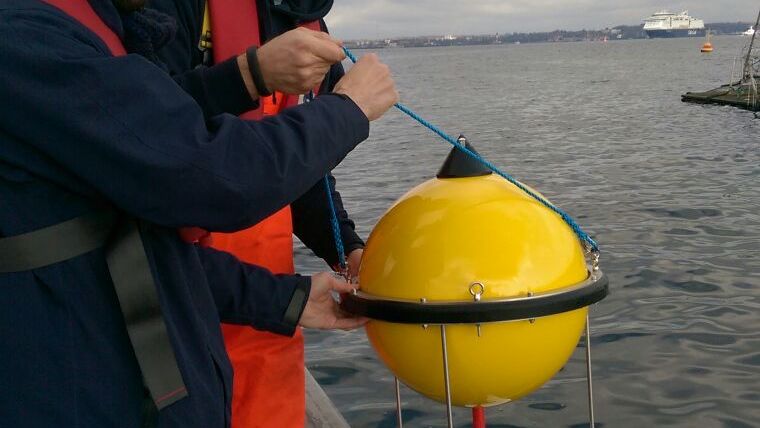Measuring Buoy Monitoring Turbidity at Dredging Sites
Transmitting turbidity data every half hour, blinking at dusk and being anchored with a 100kg weight: these are the characteristics of a buoy intended for long-term turbidity measurements. Dredging is a common and economically viable solution for the removal and subsequent treatment of contaminated sediment. Turbidity is thus an ideal surrogate for simple assessment of general water quality and effects of sediment disturbance.
MacArtney’s German subsidiary, MBT GmbH, has manufactured this turbidity monitoring buoy, which is intended for deployment for accompanying environmental monitoring during dredging.
Being deployed as a surface buoy, the compact sized, autonomous buoy system intended for determining turbidity in coastal water areas consists of a yellow buoy corpus made from durable GRP, a turbidity sensor, a rechargeable battery pack and a data logger with integrated Inmarsat modem. To fulfil safety regulations, the buoy is equipped with a white flashing LED light being automatically switched on under low light conditions. The system is capable of 14 days of autonomous operation before the batteries need recharging or replacing.
Sensor Technology
The buoy is equipped with an Aquatec AQUAlogger 210 TYT turbidity sensor provided with 4 measuring ranges selected automatically. To avoid biological growth on the optical window, the instrument is equipped with an antifouling wiper. The sensor is protected by a cage firmly attached to the buoyant body.
The buoy and the data acquisition system has an open architecture that allows for integration of other types of sensors like CTDs, fluorometers, etc.
Data Acquisition
The hollow interior of the buoy contains the satellite modem installed for data transmission. The logger sends turbidity data at a predetermined interval on the satellite modem to the MacArtney developed ’MetOcean Gateway’ portal, a web based data acquisition and data storage system, that forms an integral part of the buoy system. The buoy is also available with a cellular data transmission system.
The buoy can be used via the satellite data service anywhere in the world, states Torsten Turla, managing director of MacArtney Germany. This piece of maritime technology equipment has come into existence by means of an excellent teamwork between more departments teaming up to succeed in achieving this common goal. So far, one German customer has already taken delivery of 15 buoys.

Value staying current with hydrography?
Stay on the map with our expertly curated newsletters.
We provide educational insights, industry updates, and inspiring stories from the world of hydrography to help you learn, grow, and navigate your field with confidence. Don't miss out - subscribe today and ensure you're always informed, educated, and inspired by the latest in hydrographic technology and research.
Choose your newsletter(s)
























